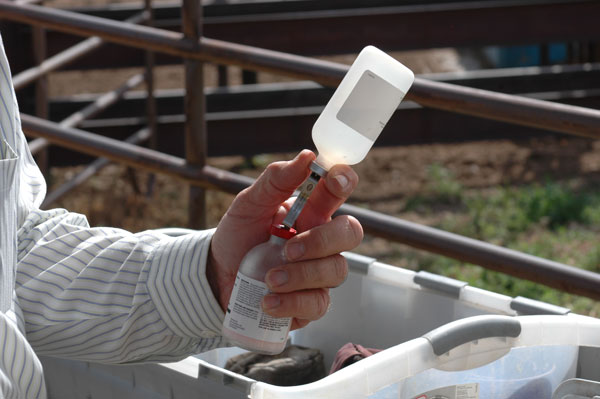FDA announced that it will publish its final Guidance 213 and a proposed update to its Veterinary Feed Directive (VFD) rule. With the announcement, the antibiotic-resistance merry-go-round kicked into road gear.
December 11, 2013

The Food and Drug Administration (FDA) will publish in the Federal Register on Dec. 12, 2013 the final Guidance 213 and proposed Veterinary Feed Directive (VFD), which implements the FDA’s policy of judicious antimicrobial use in food-producing animals by extending veterinary oversight and eliminating the sub-therapeutic use of medically important antibiotics in animal agriculture.
Guidance 213 establishes a three-year timeframe to phase out the use of certain medically important antibiotics as growth promoters and establish veterinary oversight for antibiotics used in feed or water.
With the announcement, the antibiotic resistance merry-go-round kicked into road gear.
“Cattle producers work hand-in-hand with their veterinarians and animal health experts each day to implement comprehensive herd-health management plans, which include the targeted use of antibiotics to prevent, control and treat diseases in their animals. Preventive medicine is the cornerstone of maintaining a healthy U.S. cattle herd,” said Scott George, NCBA president.
“NCBA will carefully review this guidance to ensure that FDA has addressed cattle producers’ concerns and has based these documents on sound, peer-reviewed science. Antimicrobial resistance is a multi-faceted and extremely complex issue that cannot be adequately addressed by solely focusing on the use of antimicrobial drugs in animal agriculture. Only by carefully evaluating antimicrobial resistance in a comprehensive manner that evaluates all of the peer-reviewed science related to all animal and human use, will we effectively address this important issue,” he says.
According to American Meat Institute (AMI) Chief Scientist Betsy Booren, “AMI strongly supports the prudent and judicious use of antibiotics in food animal production under the care of a veterinarian, as defined by the American Veterinary Medical Association, which is consistent with protecting both animal and public health, ensuring the ability to medically treat animals, and maintaining the highest standard of animal welfare practices and we believe Guidance 213 adheres to these principles.
“AMI is committed to working with the FDA over the next three years as this Guidance is implemented and beyond with research for therapeutic options and further understanding how resistance is developed and transmitted among humans, animals, and other living organisms. AMI will also work with groups throughout the industry and other allied stakeholders to achieve these objectives.”
Predictably, other groups took a different approach. “The U.S. Food and Drug Administration today issued a set of policies to curb the overuse of antibiotics on industrial farms,” the Pew Charitable Trust said in a news release. “About 70 percent of medically important antibiotics sold in this country are for food animals, and most are used in feed without supervision of a veterinarian,” the release said.
You might also like:
Share This --> Breathtaking Photos Of Winter On The Ranch
Photo Gallery: Santa's Little Ranch Helpers
2014 Will Be A Record Year For Calf Prices And Risk
3 Lessons From A Greenpeace Dropout
More Consumers Are Realizing The Dishonesty Of The Animal Rights Industry
You May Also Like



